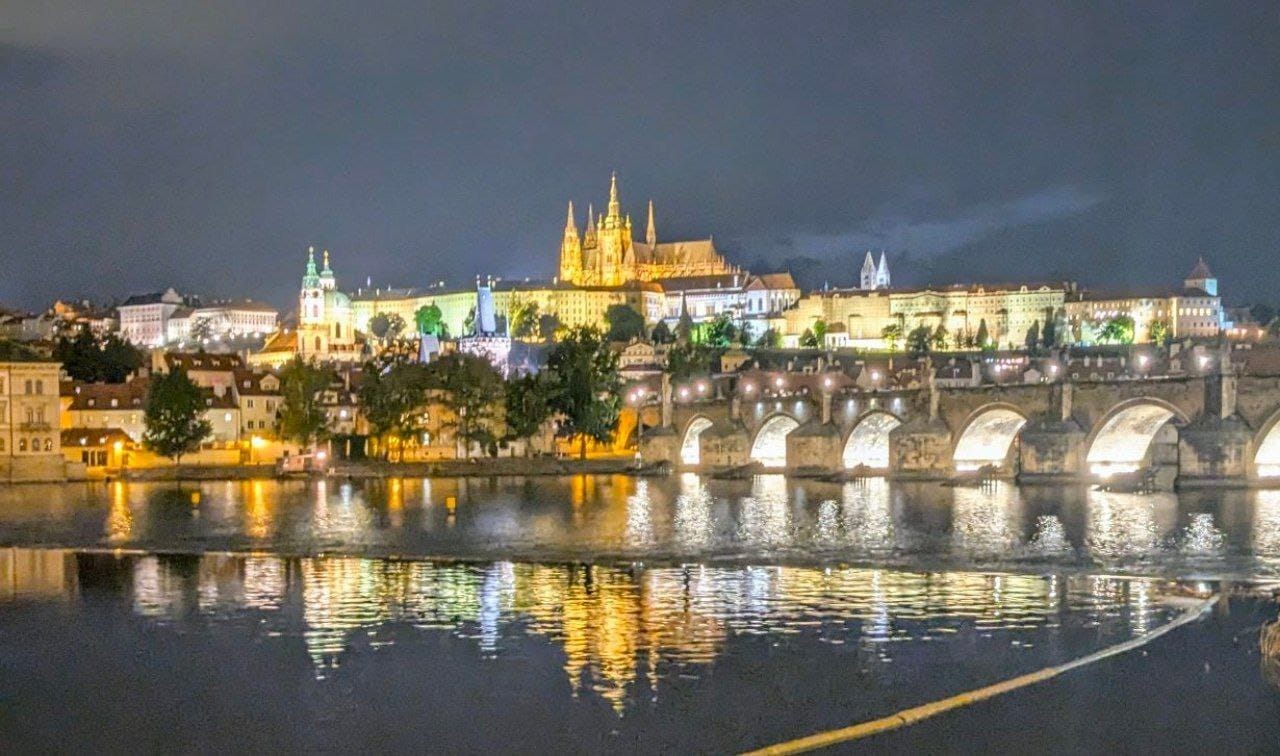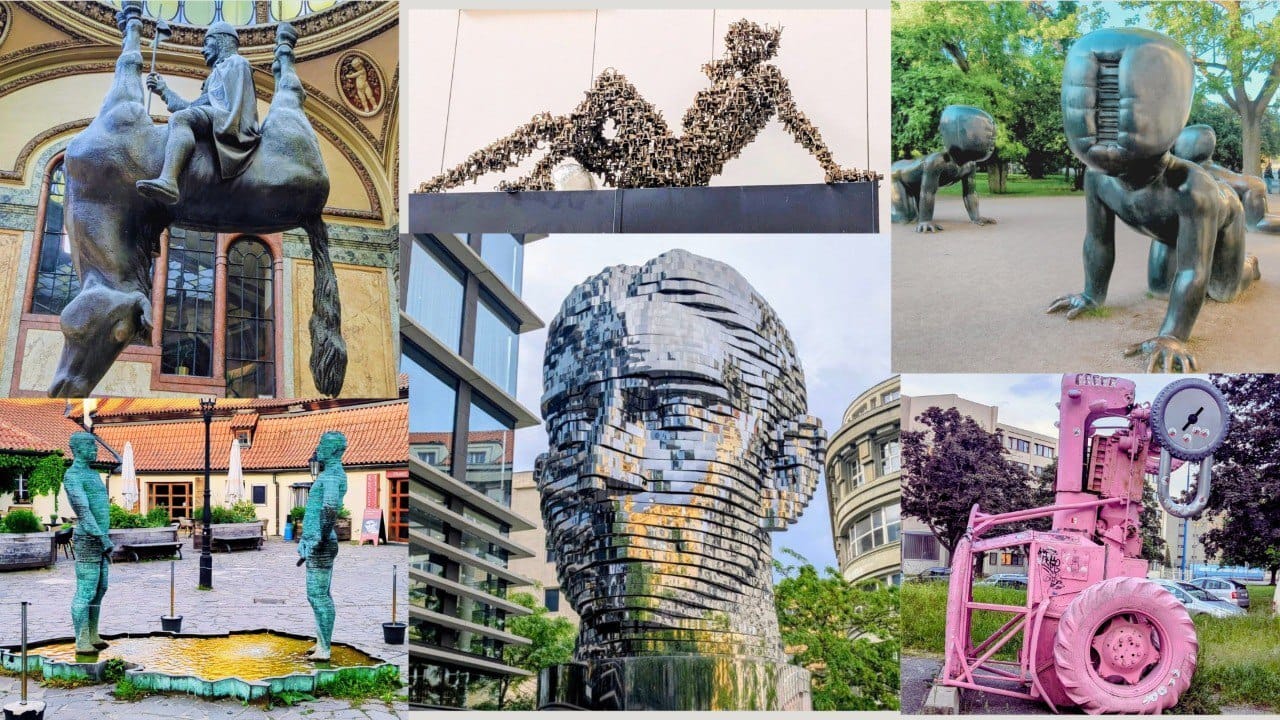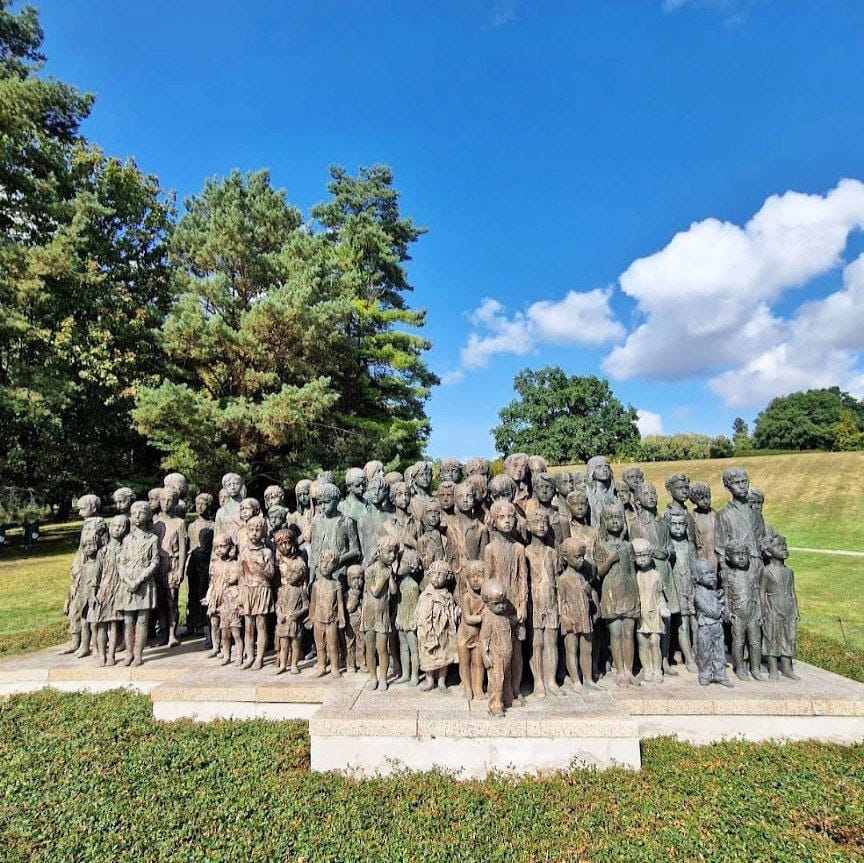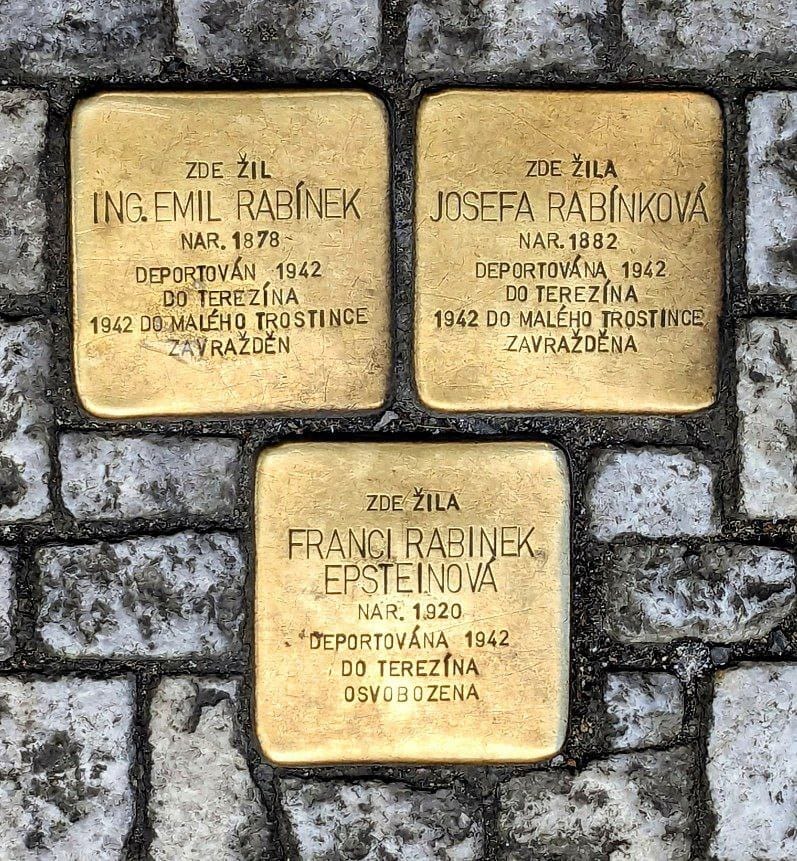- Holistic Travellers
- Posts
- Prague Uncovered: Bizarre Installations and Forgotten Tragedies
Prague Uncovered: Bizarre Installations and Forgotten Tragedies
Discover how Prague's most provocative artist challenges tourists with bizarre installations, while the city's streets whisper stories of WWII betrayal and resilience.
Thanks for subscribing to Holistic Travellers. This is Suneela and Yeswanth and we are travelling to Europe again!
Ahoj!
After our emotionally heavy visit to Terezin concentration camp that we shared in our previous blog, we were ready to explore Prague's lighter cultural side. But as we discovered, even the most beautiful cities carry complex histories. This blog takes us from Czech beer culture and art to the darker chapters of WWII that shaped this country.
Beer Culture
Did you know that Czechs drink more beer than any other country in Europe? Yes, even more than Germans. Czechs have centuries of beer brewing traditions and it's ingrained in their culture. Beer here isn't just a drink: it's a way of life. One of the best places to drink beer is Letna Park, perched on a small hill overlooking the city of Prague. Oh Yes, a park on top of a hill!!

A view of Prague in the night
We had a fun time taking our frisbee, playing for a little while and chilling there having a beer and admiring the views of Prague. What struck us was how families with children were also enjoying beer, it's completely normal here, unlike in many other countries where beer is seen as an adult-only drink.
Chasing David Černý’s Art
After enjoying Prague's beer culture, we decided to explore the city's artistic heritage. David Černý is a Czech artist known for his provocative installations that makes you stop and think.
His most famous piece is Metamorphosis, which shows Franz Kafka's head, which rotates every hour. We found ourselves joining a crowd of tourists waiting for the top of the hour, all of us staring at this bizarre, mesmerizing installation. There was something incredibly intriguing about watching Kafka's head slowly rotate - it was both hypnotic and thought-provoking. We were so intrigued by this installation that we decided to hunt for more of his art scattered around the city. It became like a treasure hunt - we'd research for all the installations on Google Map and start plotting our transports to take to reach the place.

David Černý’s various art installations
One day, we discovered a man hanging from the roof of a building. The sight was bizarre. And we saw more bizarre things like Crawling faceless baby, a beating embryo, statues of pissing men, that totally made our mind say, "Whaaat?!". David Černý is known for not explaining his art installations, and it is up to the tourists to decipher what he could mean through his art.
After exploring Prague's modern art scene, we wanted to understand the historical context that shaped this city.
When the Second World War Began (a Czech perspective)
Most people think World War II started in 1939, but Czechs will tell you it began in 1938. Here's why.
The UK, France, and Germany met in Munich in 1938, and agreed to allow Hitler to occupy the Sudetenland, a German majority region that belonged to Czech Republic. The UK and France feared that Hitler would come after their countries, if they didn't appease him.
What's striking is that even though the Munich Agreement concerned Czech lands, no Czech representatives were invited to the negotiations. The Czechs felt betrayed by their Western allies. They famously call this betrayal "About Us, Without Us."
It's quite funny that the Allies (UK and France) felt they had to appease Hitler in 1938 and then very soon shifted gears when Hitler became a threat to them in 1939 and declared war.
A wiped out village
A few Czech soldiers were trained in secret to assassinate Reinhard Heydrich, one of Hitler's most brutal commanders and the incharge of Czech Republic. After careful planning, they bombed his car. Heydrich was severely injured and died in hospital a few days later. The Nazis were furious!
In retaliation, the Nazis chose to annihilate the Czech town of Lidice. Their orders were chilling: execute all adult men, send all women to concentration camps, and either send children to German families for 'Germanisation'. Then they burned down the entire village to erase its existence. They wanted to wipe Lidice completely off the map.
“A person is only forgotten when his name is forgotten.”

Lidice memorial
But Hitler's plan to erase Lidice failed. Soon after the village was destroyed, towns and neighbourhoods across the world - from Mexico City to Venezuela, Panama to Brazil, renamed themselves in Lidice's honour. The name would live on, despite Hitler's intentions to erase it completely.
It's heartbreaking that something like this happened, and even more heartbreaking that this story isn't widely known. In Prague, we found another way the city remembers those who suffered through stumbling stones embedded in the streets.
Stumbling Stones
In many cities in Europe, including Prague, you would find stumbling stones in the ground, while walking on the streets. These stumbling stones are embedded in the streets and contained the names of Jews who had perished during World War II. It's mostly meant for remembering the people who have perished due to holocaust. As it is in the ground, the person stumbling upon it has to bend down to read the names, thereby providing the due respect to that person.

Stumbling stones
In Prague, the stumbling stones are located in the ground usually at the front of a property (or where a property once stood), usually near the last freely chosen residence of the person. There are more than 100,000 stumble stones spread over 2000 towns in Europe. We really loved how a small gesture by many cities in Europe can have lasting impact on the future generations.
After spending a lot of time learning history at Prague, we wanted to end our trip by making a visit to a museum that shaped the world after World War II. Read more about it in our next mail.